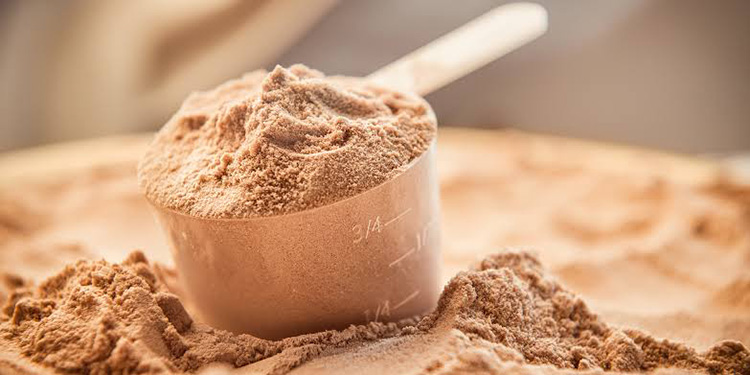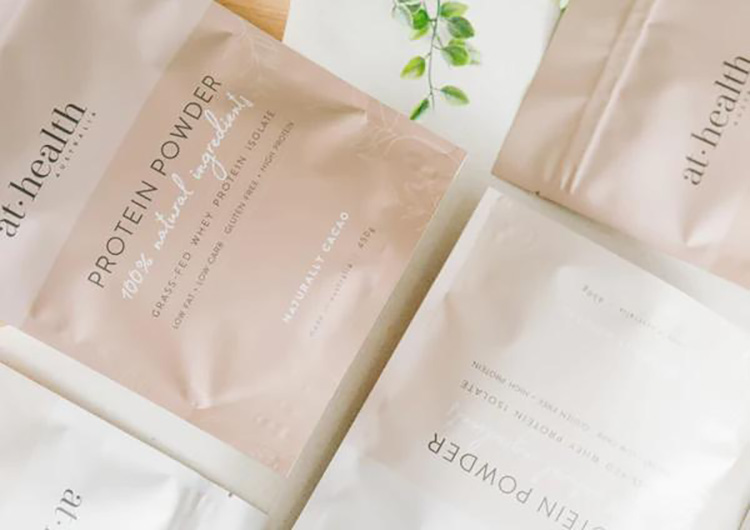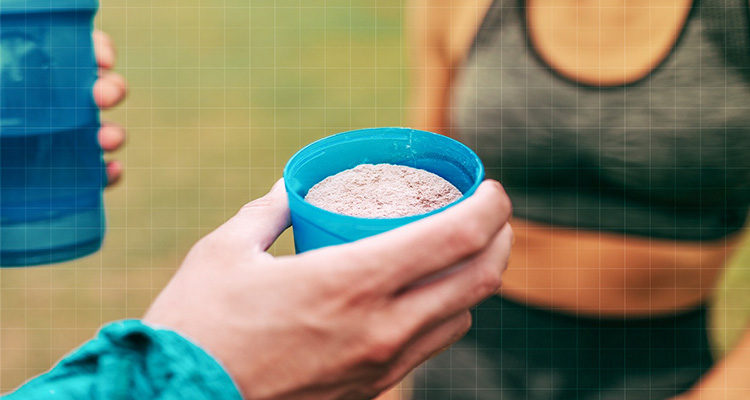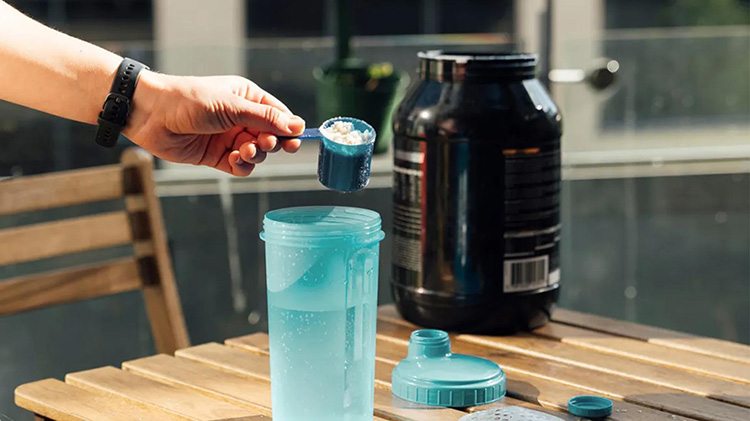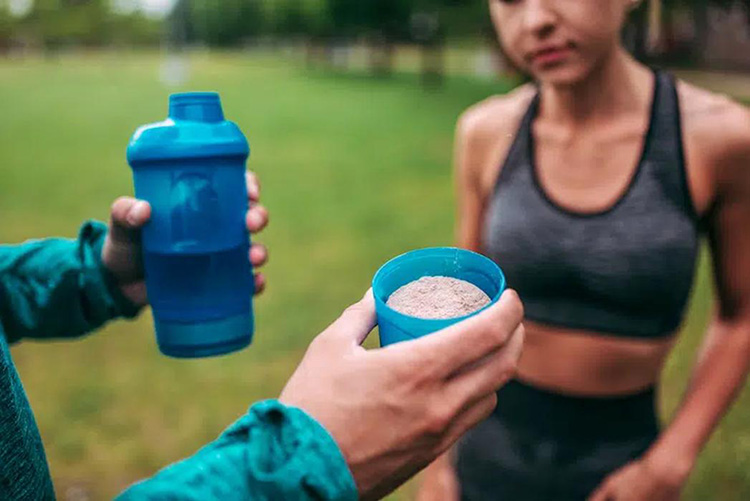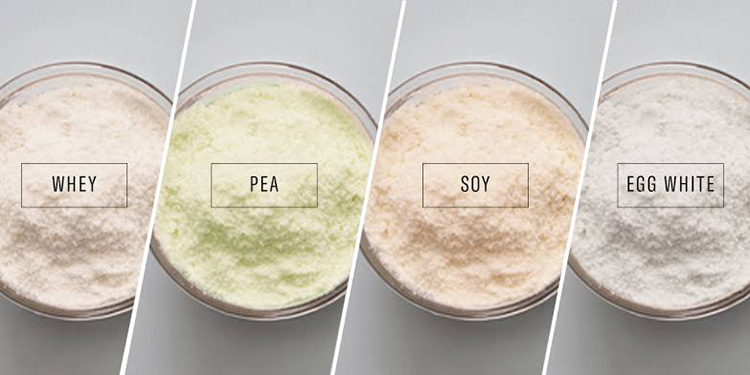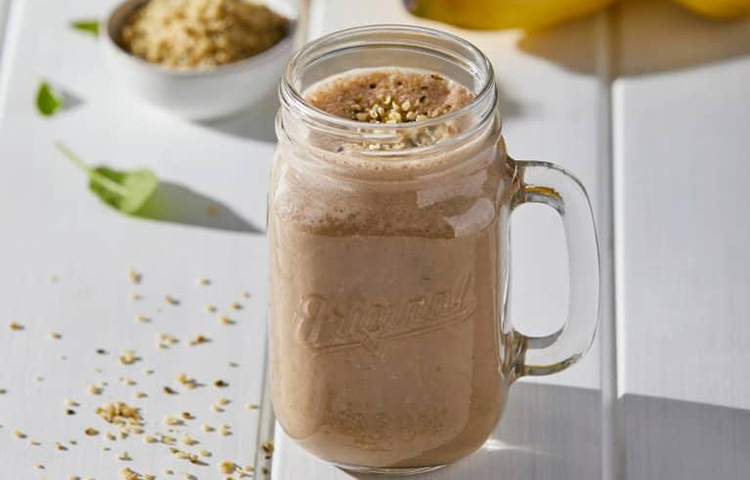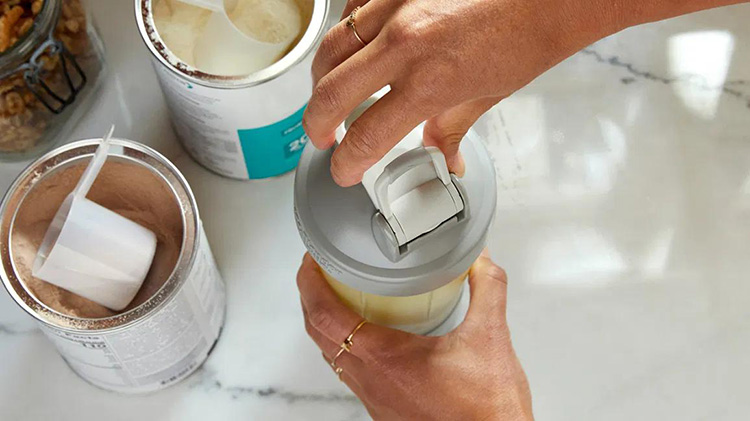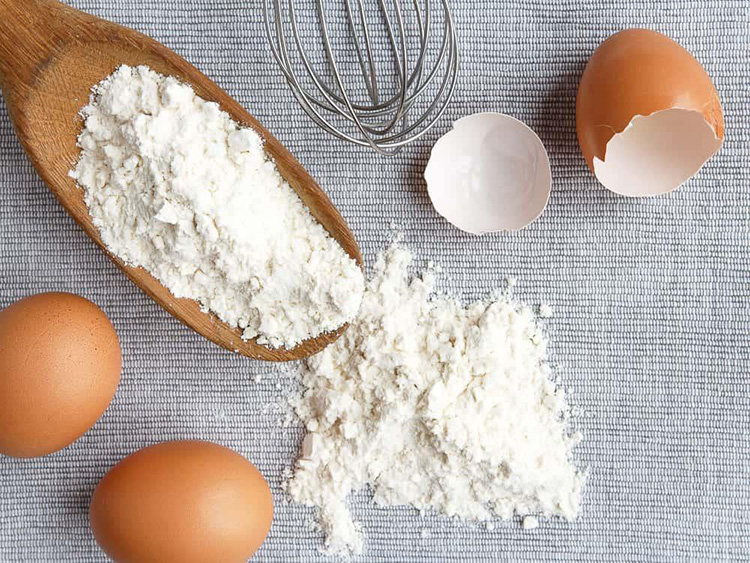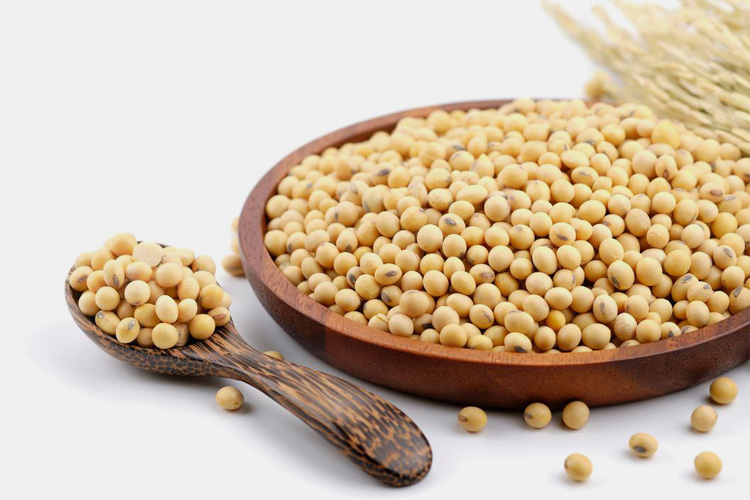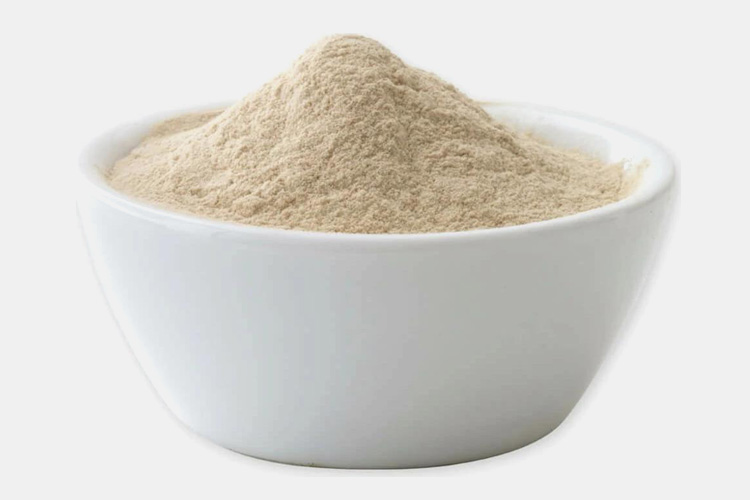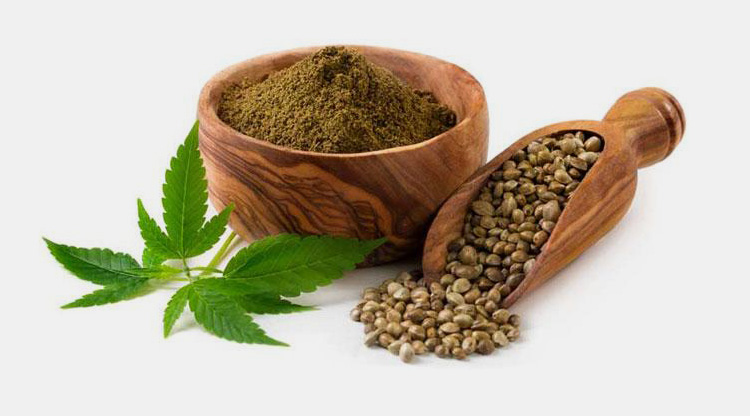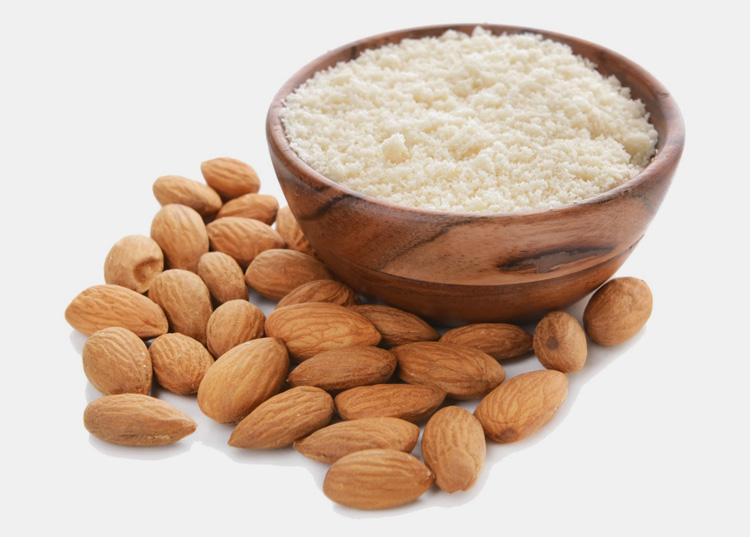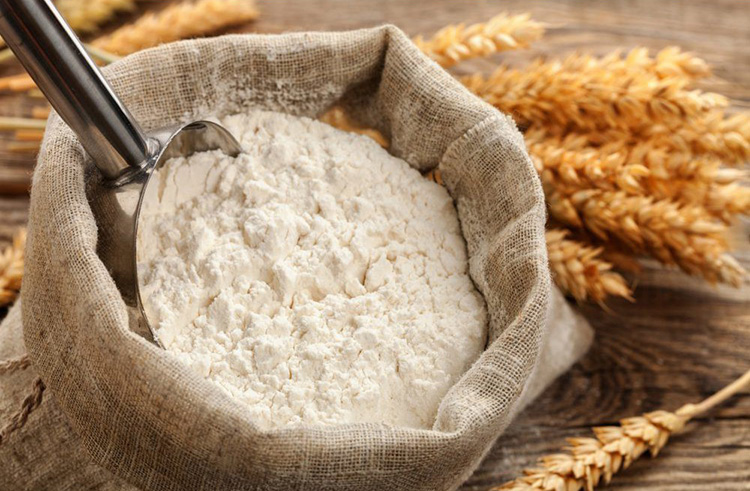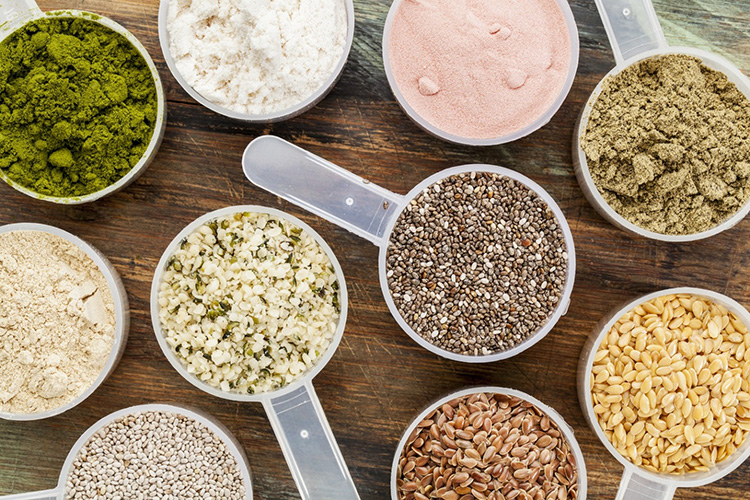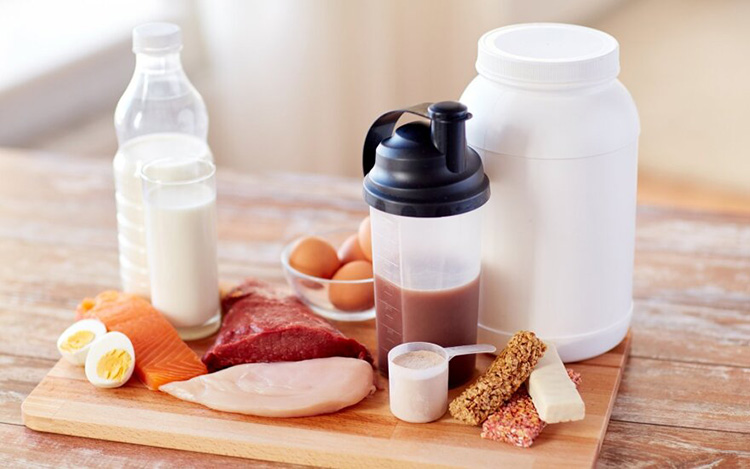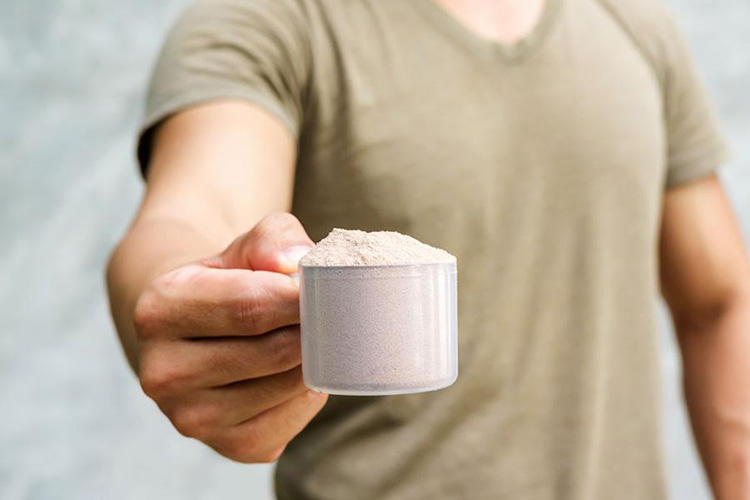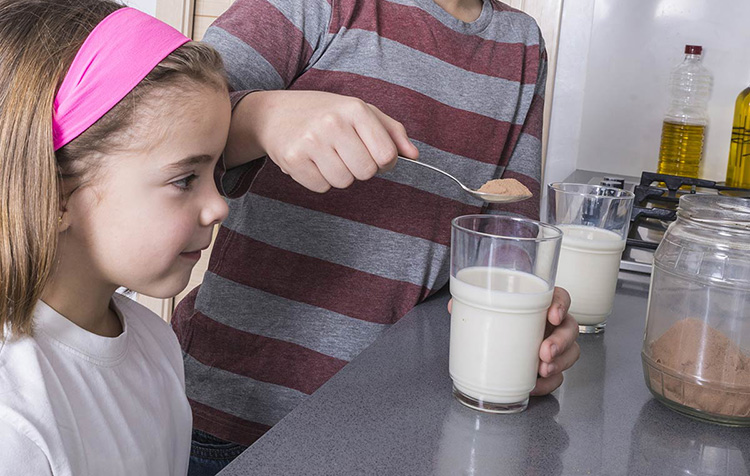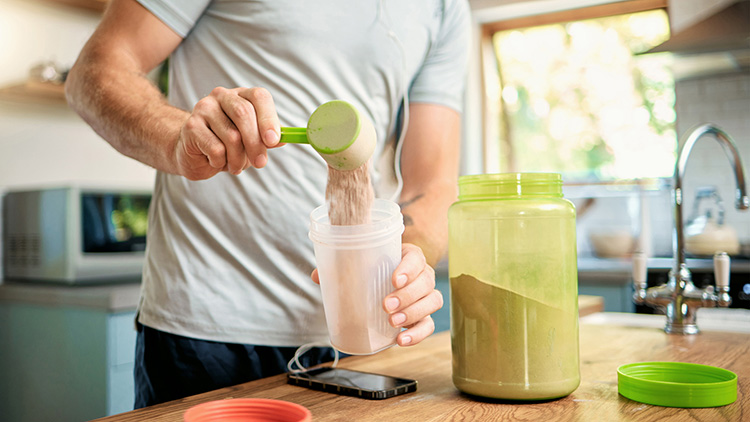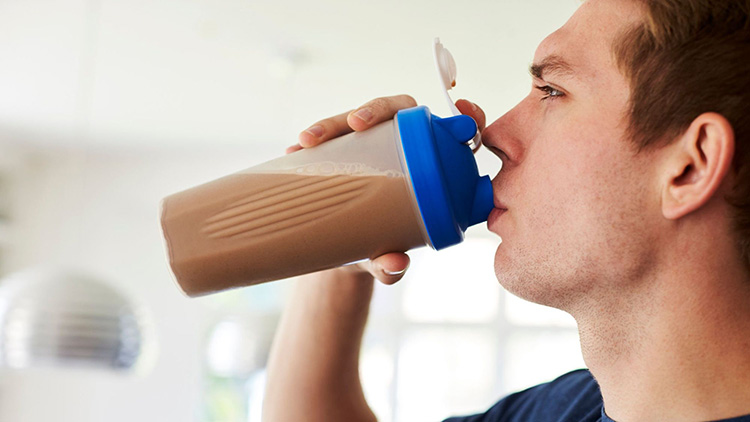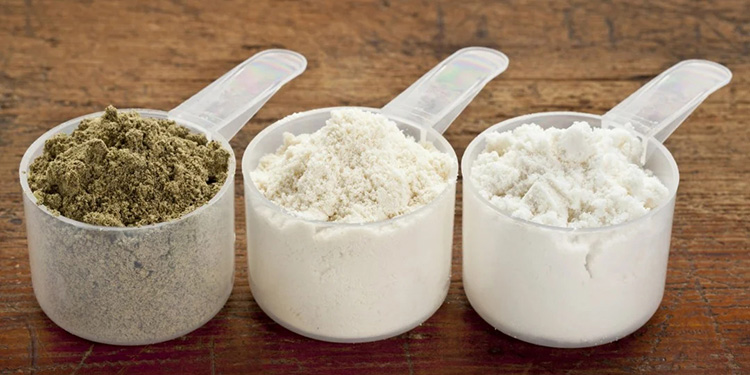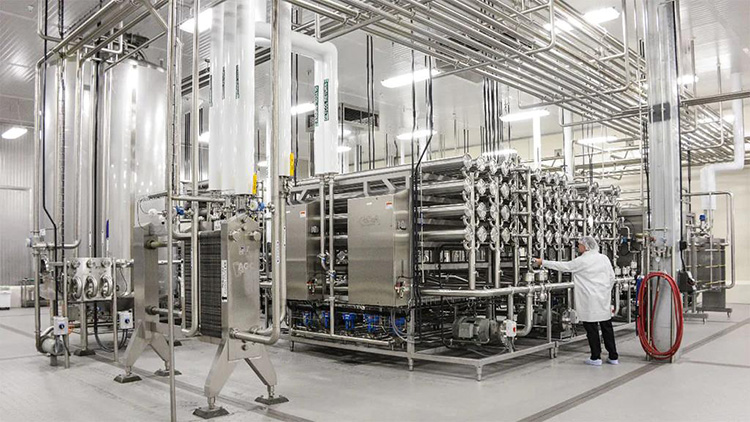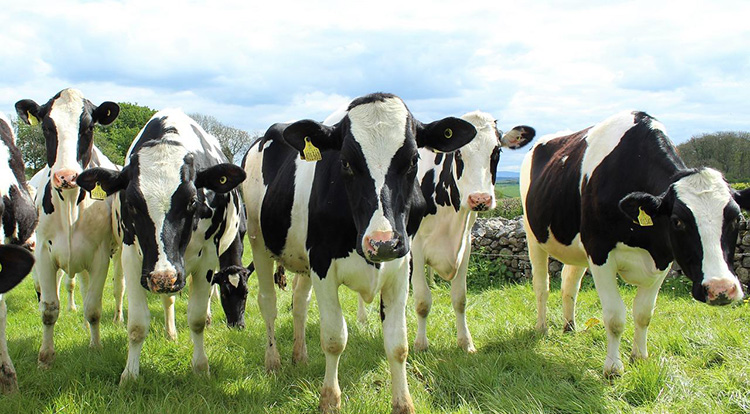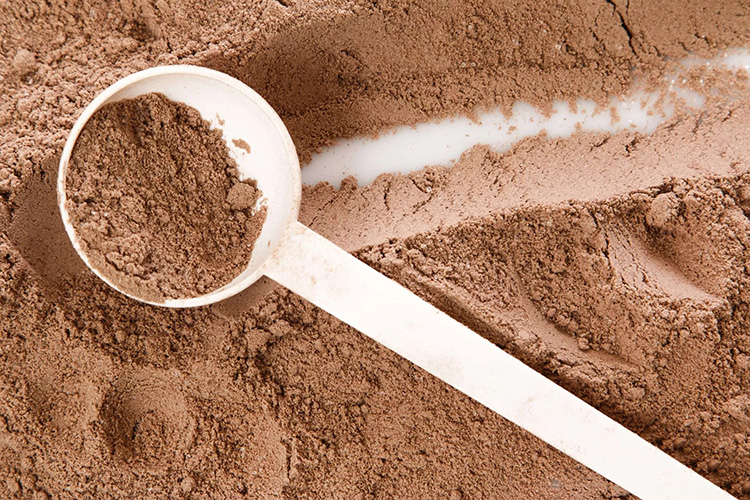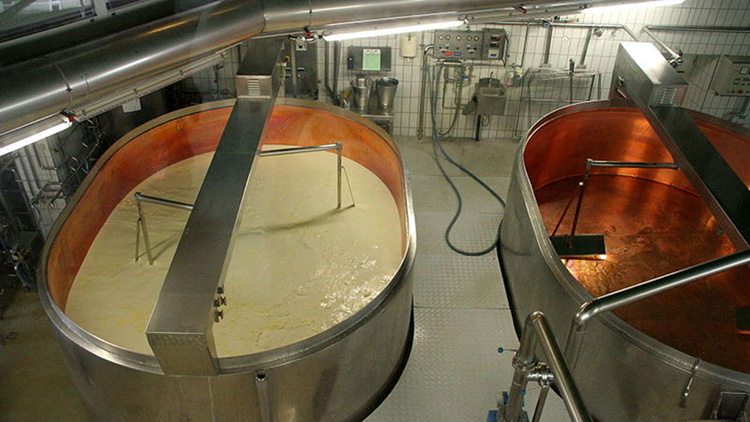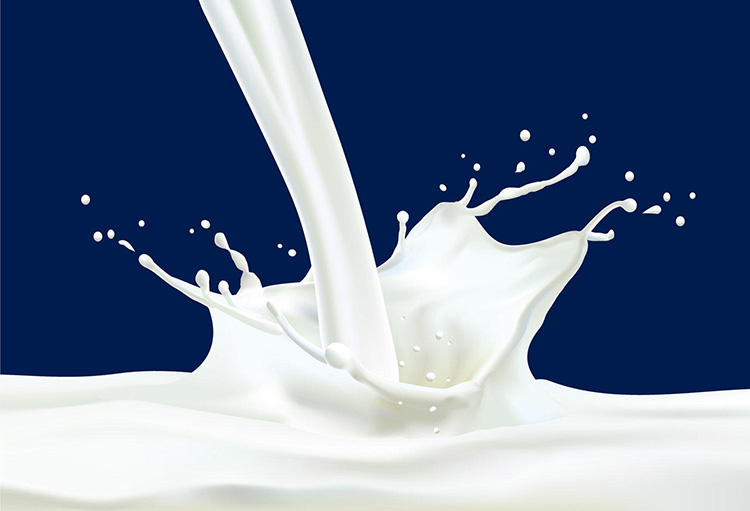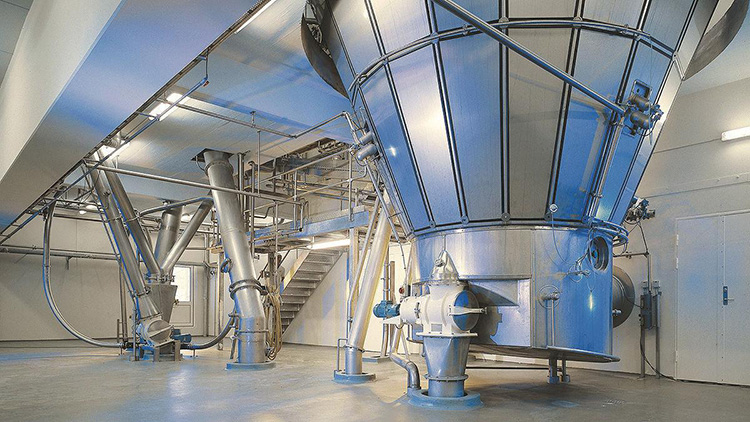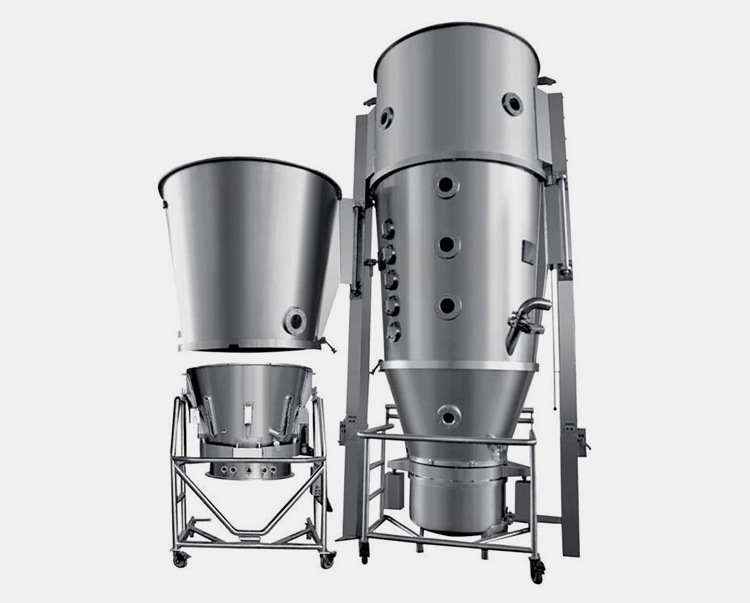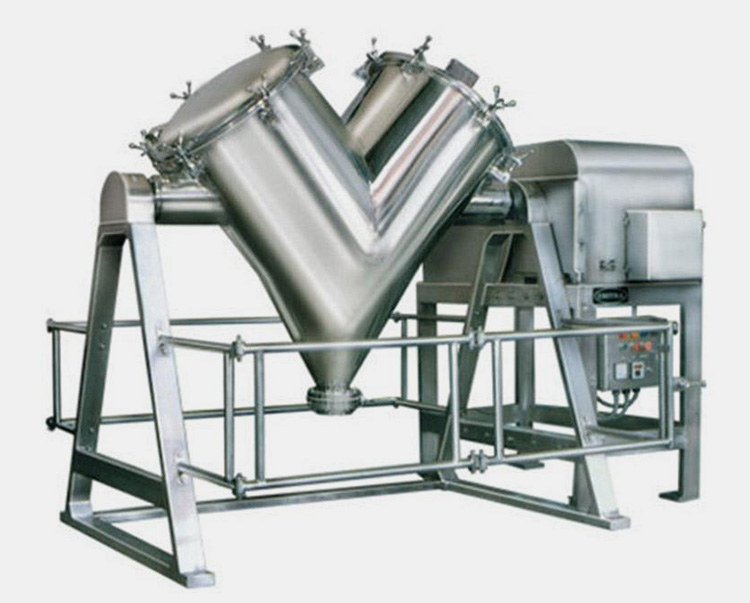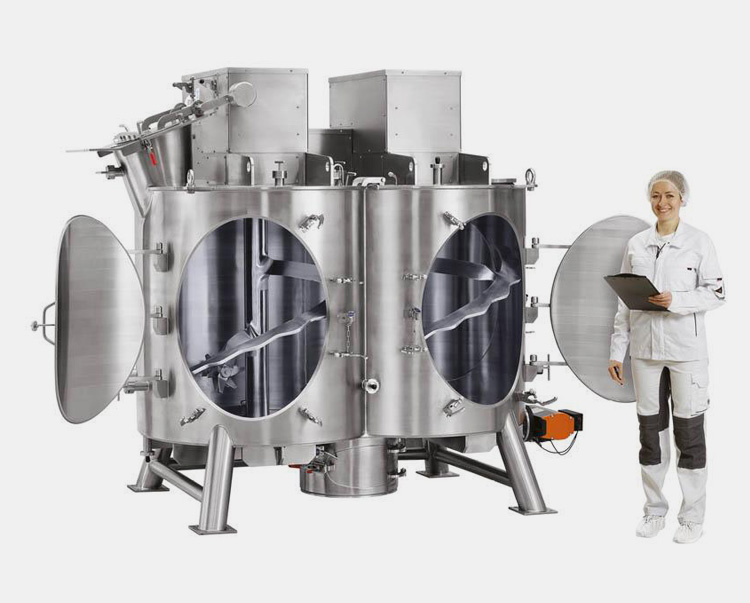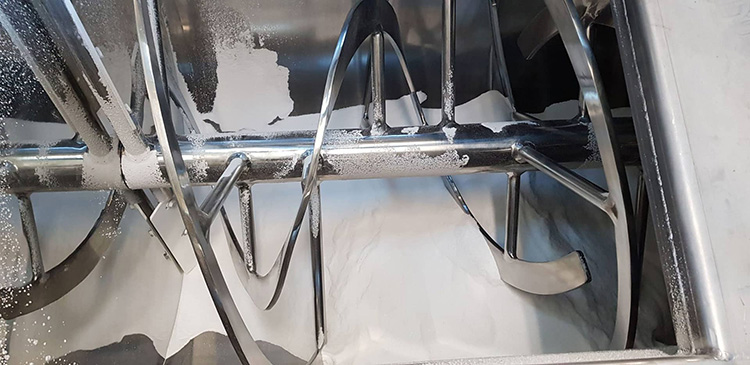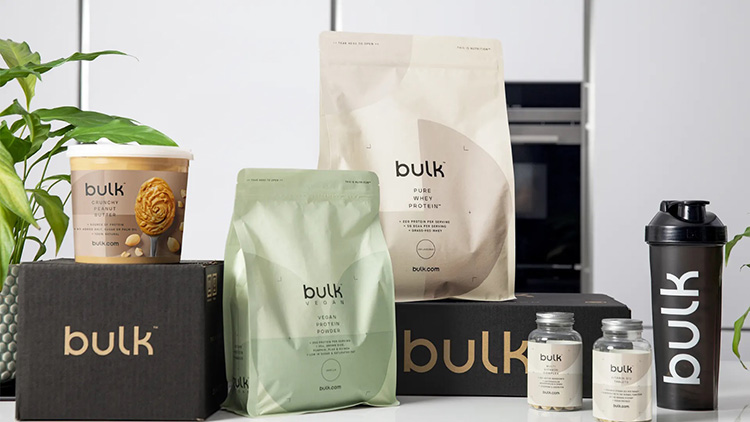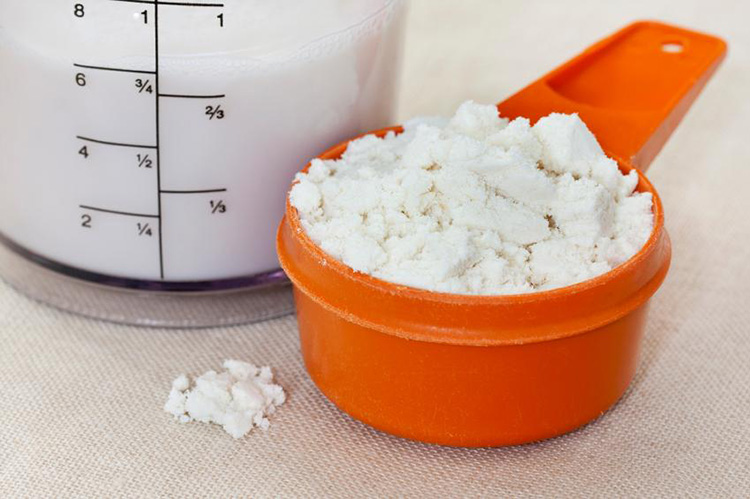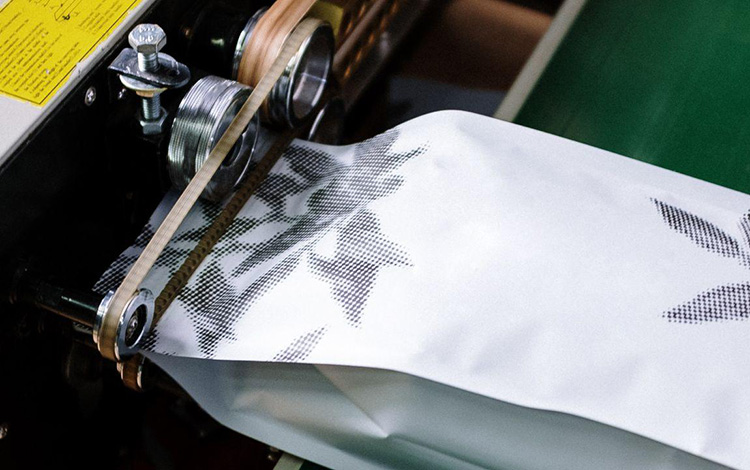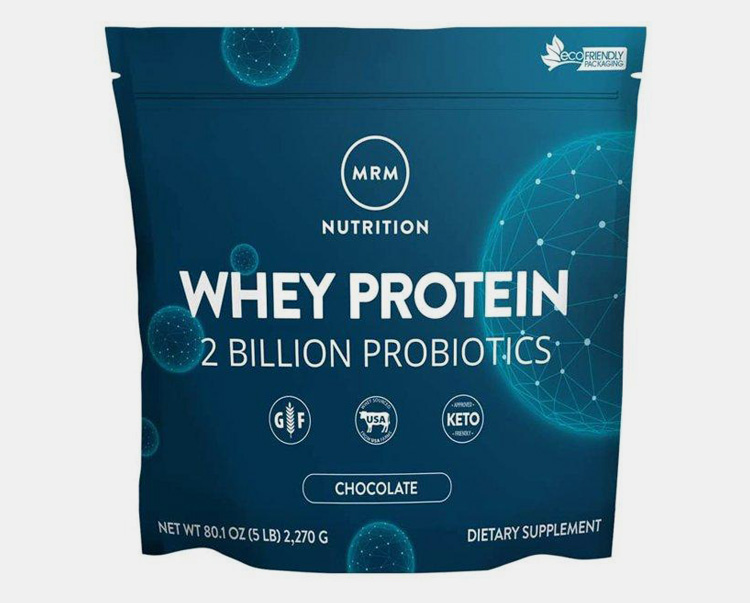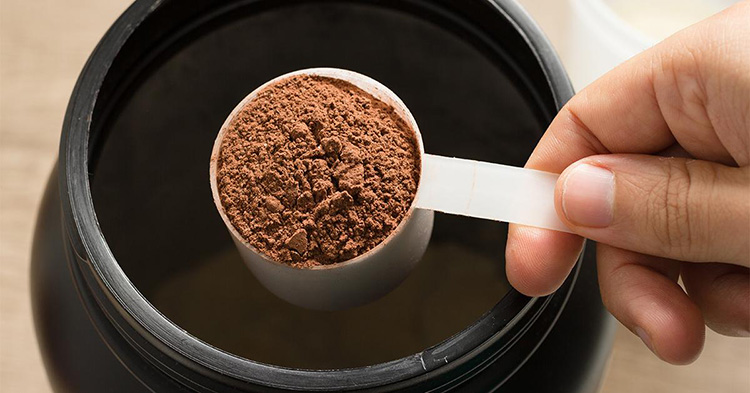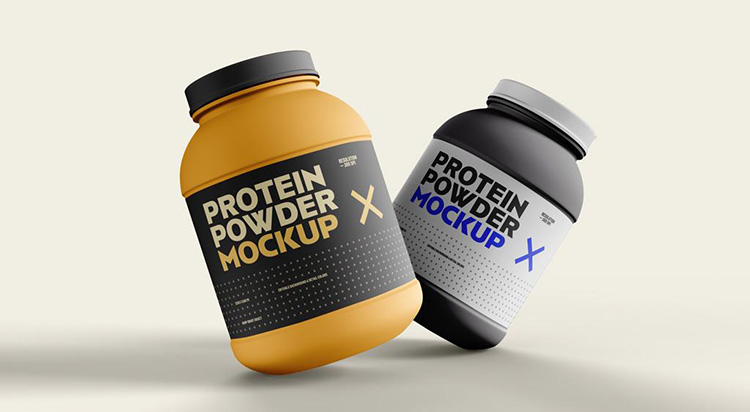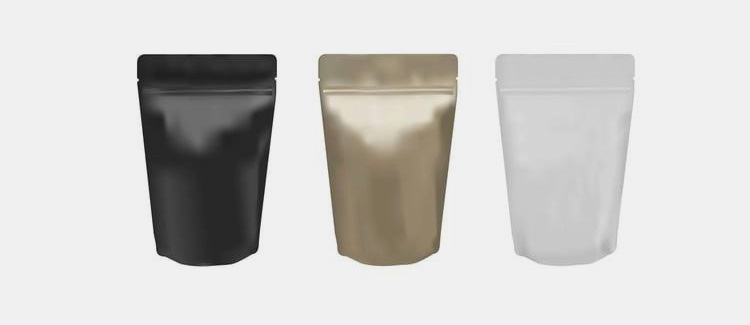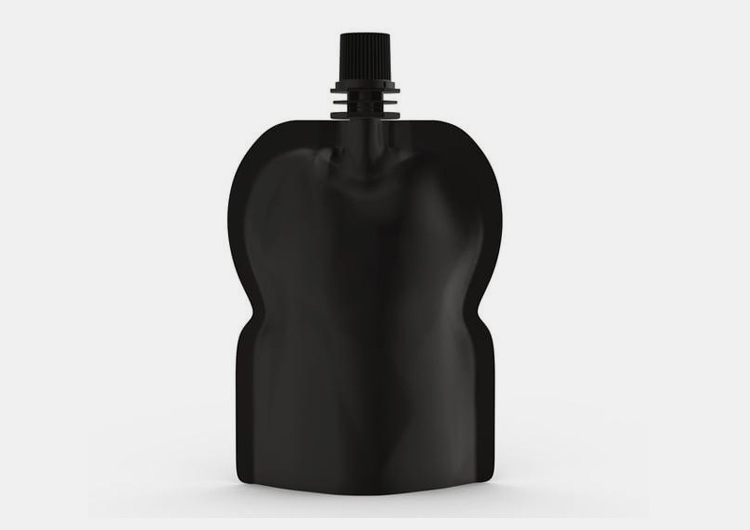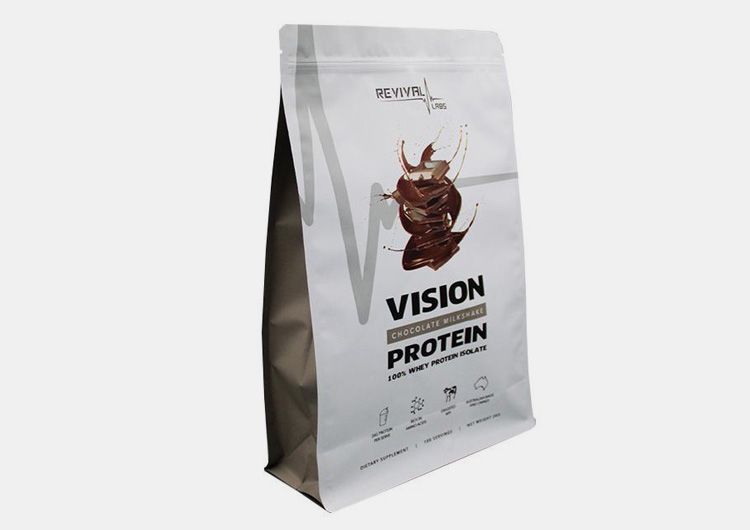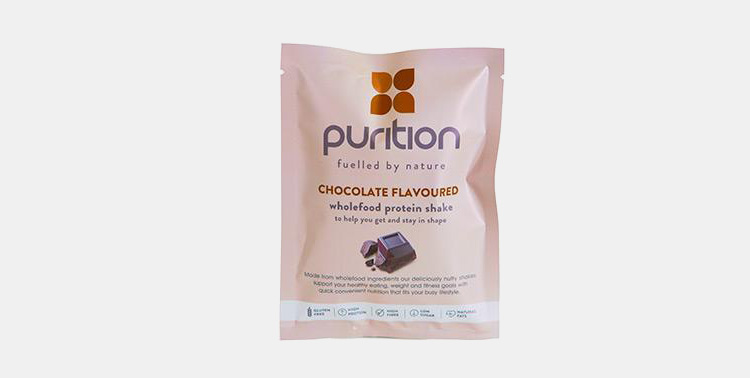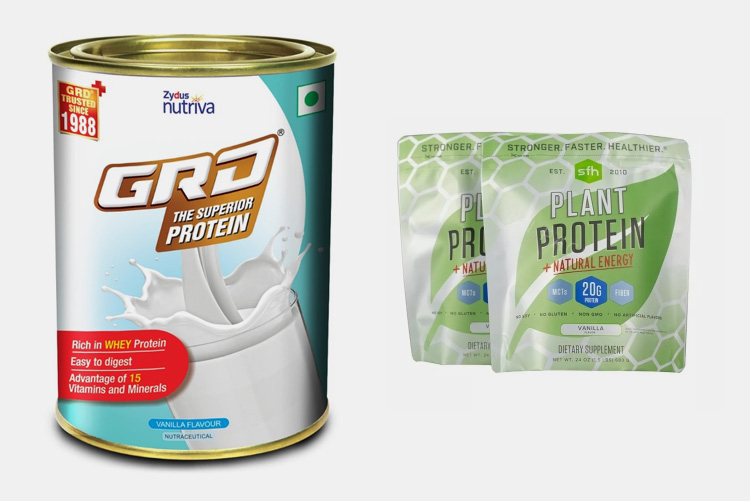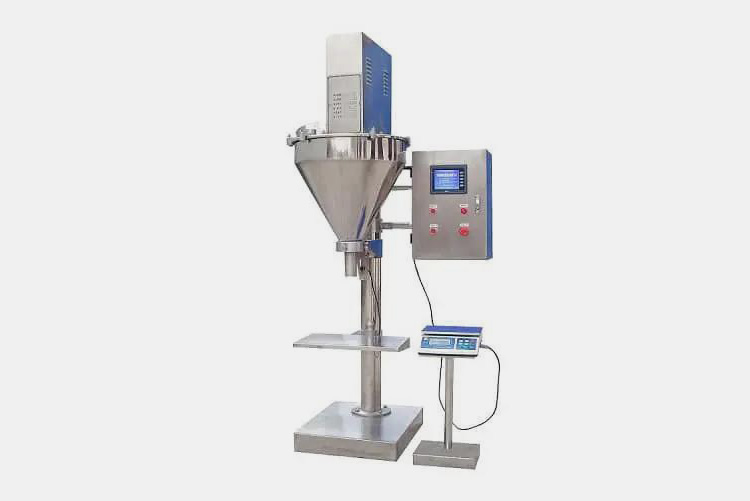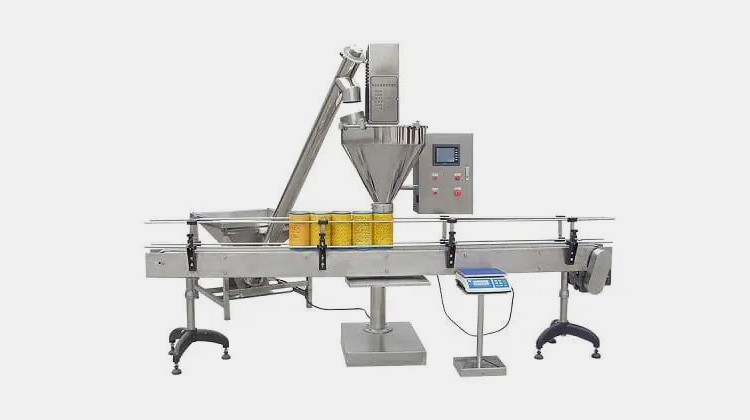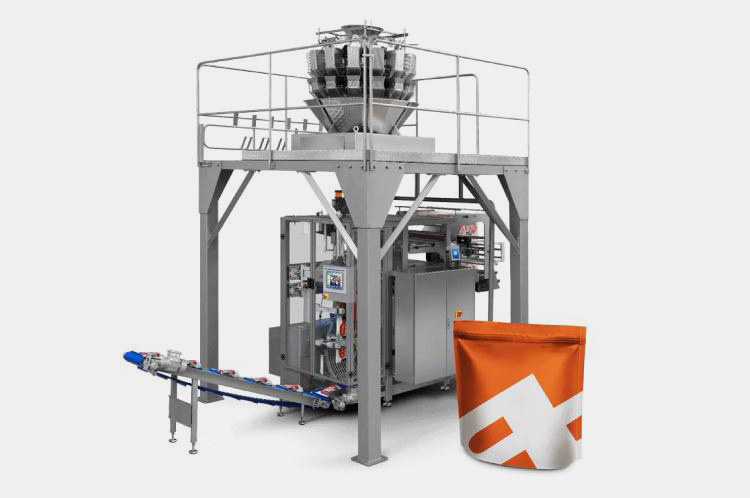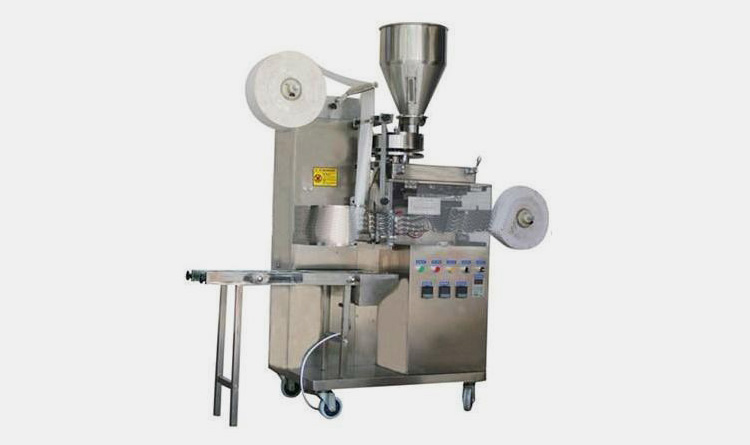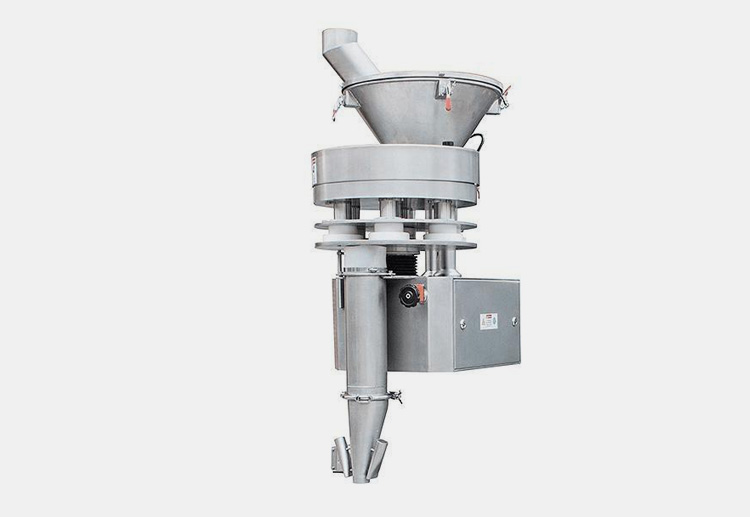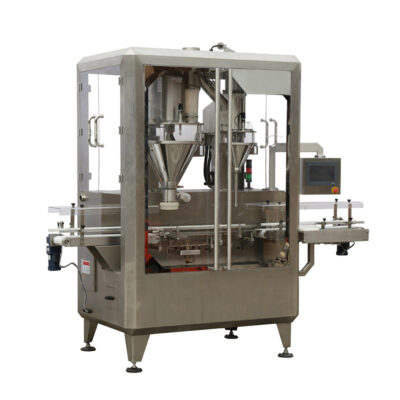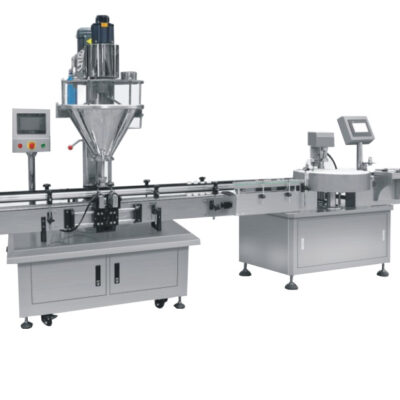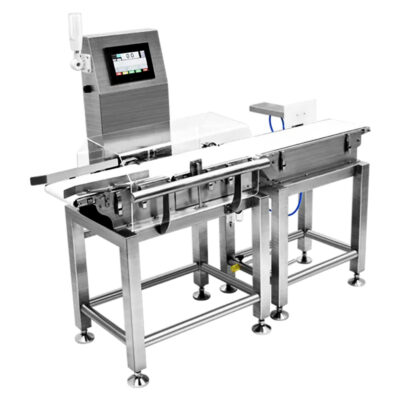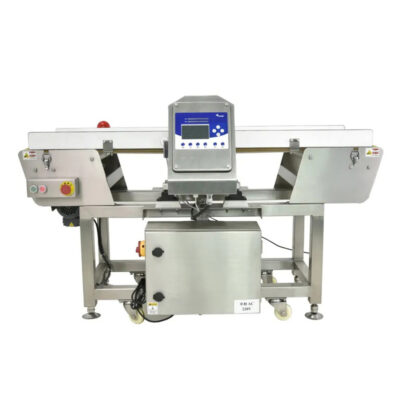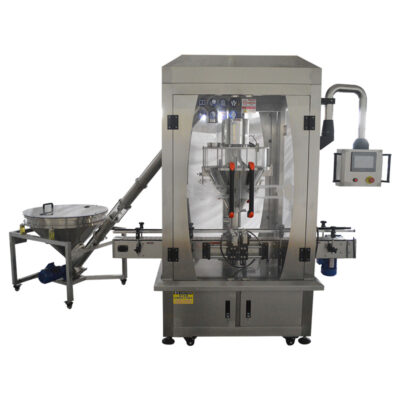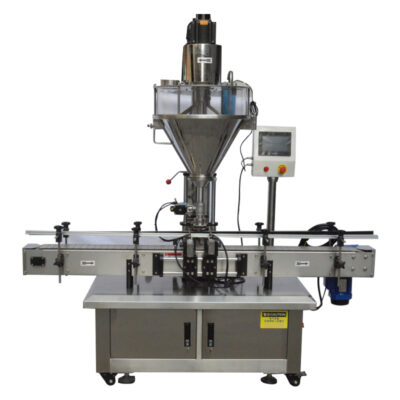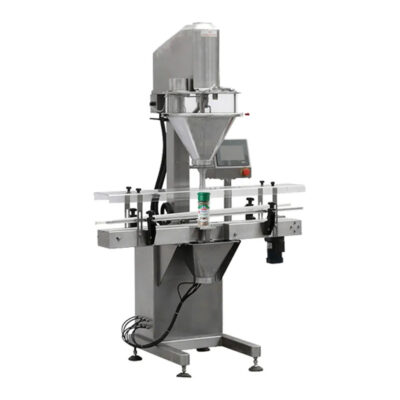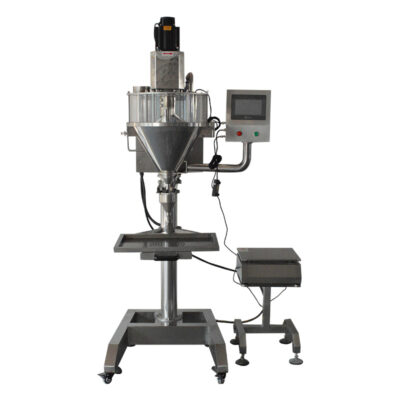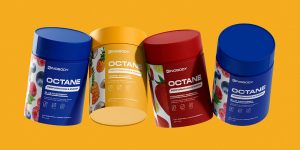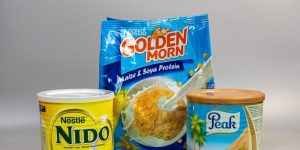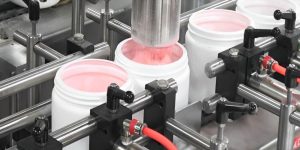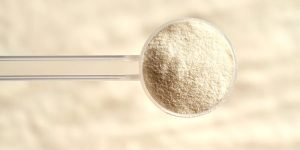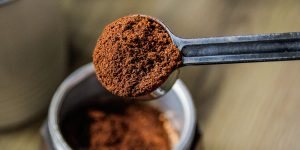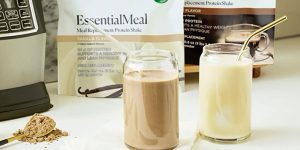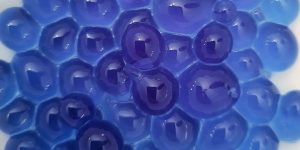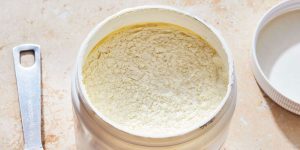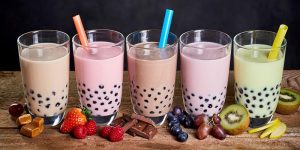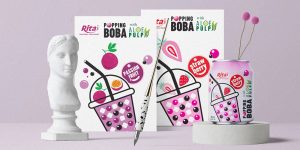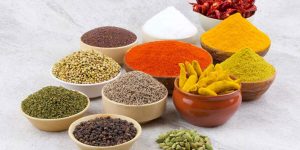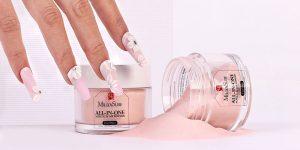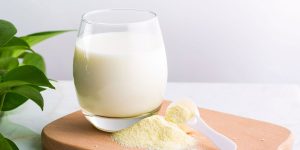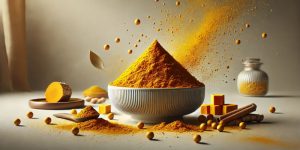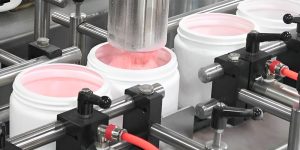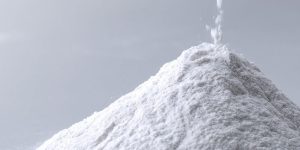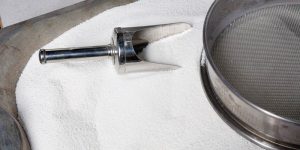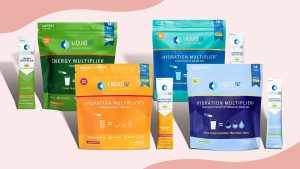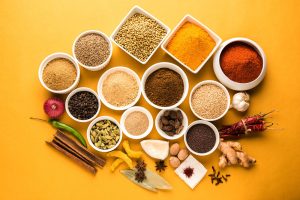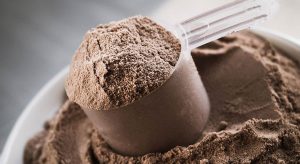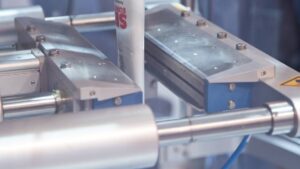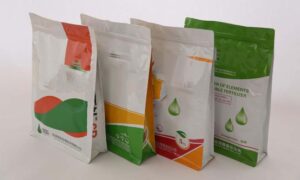Protein Powder: The Ultimate FAQ Guide in 2025
You might be thinking of athletes who consume drink constituting of protein powder after looking at the heading of this topic. But protein powder is not only for those heavy building people but also for common use. Protein is one of the essential nutrients required by our body for many physiological processes to be carried normally like building muscle mass, for growth and repairing of tissues, and the functionality of hormones and enzymes as they are protein in nature.
Reading this article, you’ll be fascinated to know why protein powder is so famous and popular. You’ll get to read the guidelines which might answer your queries about whether everybody requires this supplement or not and how to choose a better one for you. Without any further delay let’s get into the article to know more about it!
1.What Is Protein Powder?
Protein powder is a form of a nutritional supplement containing protein and some other added ingredients. It can be formulated from plant or animal-based sources. Not everyone needs to add protein powder to their diet because most of its consumption is usually satisfied through natural sources like nuts, meat, seafood, soy products, etc.
The RDA value for protein is 0.8 grams per kilogram of body weight, however, it might differ from person to person. Protein powder is usually intaken by those needing nutritional supplements for fulfilling their higher demands like athletes or some patients who are deficient in proteins. It can be consumed in many delicious ways possible.
2.Is Protein Powder Healthy? Is Protein Powder Good for You?
To answer this question, you must ponder first that taking nutrition from direct whole foods and a good diet is foremost necessary, intake of supplements comes secondary. However due for any reason if you’re lacking in any particular type of nutrients, you may take its supplement.
Similarly, protein powder is good for those who either do not have sufficient protein in their diet or need an extra amount of protein to cater to their needs (for eg: disease patients, older patients, and athletes). But it is also mandatory to check that your powder does not contain additives and extra sweeteners and is void of any harmful contaminants.
You might have read the summarised benefits of protein when reading the introductory part of this article. Protein powder provides you with many benefits, listed below are some:
Healthy Balance of Weight: If you are health conscious, you might be worried about putting up extra weight due to feeling hungry often, but this can be counteracted by taking Protein (foods or supplement form as powder) which would help a person to feel fuller and thus snack less. Whey protein powder helps obese people to fight extra mass and also decreases cholesterol levels and blood pressure.
Muscle Development: If you are an enthusiastic gym person you might be fond of drinking protein shakes, and you definitely know why. Protein powder or any form of protein supplement is known to build and grow protein mass strengthening individuals who work out strenuously such as by lifting weights etc.
Recovering Muscle: After heavy workouts muscles often get damaged and inflamed, to repair and recover muscle damage and soreness athletes use protein powder to improve muscle performance and rebuild damaged protein.
Extra required nutrition: The RDA value of protein for women above nineteen years of age is over 46 grams and for men. An extra amount of protein might be required by those people who are suffering from any chronic disease or old people.
3.How Can You Consume Protein Powder?
Protein powder might contain up to 80g of protein which may exceed the value required for some people, as mentioned above only certain people require an extra nutritional supplement.
Consuming too much protein might interfere with other beneficial nutrients like fibre which the body uses to help good bacteria in our gut. According to a report, taking Protein supplements along with meals helps to fight obesity and aids in weight management. Another report was suggesting that the intake of protein powder after exercise helps regain damaged protein by the synthesis of new ones. People may according to their choice and taste intake protein powder either mixed in a fruit smoothie or as a milkshake.
4.Top 10 Best Protein Powders
Categorically, protein powder has two distinct types based on the source they are derived from. Either plant based or animal/dairy products based. Vegan protein powder is an excellent option for vegetarians or people with lactose intolerance or who want to consume plant based products.
Mentioned below are the top 10 best types of protein powder around you!
Whey Protein Powder
is one that is most widely known and used as a supplemental intake whose origin can be found in cow’s milk, popular amongst athletes as this protein is absorbed easily and quickly by the body.
Casein Protein Powder
it is also dairy based. As your body does not make any amino acids, so you must fulfill the requirement from any exogenous sources that are aided through these dairy proteins. But casein is digested comparatively slower than whey protein and it might also be unsuitable for vegetarians.
Egg White Protein Powder
The egg is a valuable source of obtaining not only protein but vitamins, and good fats that are required by your body for proper functioning. This powder can give you the same benefits as eating eggs, thus the perfect solution for those who abstain from consuming them. Somehow, this form of protein powder is less common than casein but slowly and gradually it is gaining popularity among youngsters.
Soy Protein Powder
It can be good for those who avoid dairy products and want to gain all the essential amino acids. It is a fundamental element in various plant-based foods such as ‘tofu’, and ‘tempeh’. However, when it comes to building body muscles it is comparatively less effective than animal-based protein powders; although it helps in stimulating muscle proteins to be synthesized in the young population. One thing to keep in mind, many soy powders are available in processed or altered form, therefore try to search for an authentic manufacturer with a reputable profile when purchasing it.
Pea Protein Powder
It contains a good quantity of amino acid “Arginine”. Pea protein powder is a good source to obtain essential amino acids except for methionine. This is one of the gluten-free source so a great option for those who’re allergic to dairy products. Plus, the International Society of Sports Medicine published that pea protein powder can contribute to the progression of muscle thickness similar to whey protein.
Brown Rice Protein Powder
Good news for brown rice lovers! This is another common source to get protein. Among a variety of rice, this one is the best form with protein. Unlike whey and casein, you cannot consider it as a complete protein neither it has all essential amino acids, therefore, you can add a supplementary diet when taking brown rice protein powder.
Hemp Protein Powder
It contains proteins and fatty acids that entirely make it the best one! Hemp protein powder has gained popularity in last few years; obtained from the hemp plant by grinding and pressing the hemp seed into the finest powder.
This is a great option for those who’re looking for a different kind of protein from plants. Moreover, hemp protein is easy to digest, enriched with protein content like grains and nuts enriched with several omega-fatty acids.
Almond Protein Powder
This is ideal for diabetics! Because these people are more prone to protein destruction as their carbohydrate is not utilized as a source of energy for them. That’s why diabetics suffer muscle weakness and associated problems.
The best part about almond protein powder is that it is free from gluten and cholesterol. Almond protein powder is becoming a trend among diabetics for a perfect fitness goal.
Protein Mix for Atta
This protein powder is interesting as its name; yes this is the same atta used for chapatis or roties. This is an excellent source of protein and a more potent health booster. This is ideal for vegans which is a combination of pea protein, brown rice protein, and stevia.
Plant- Merged Protein Powder
This is the best option for all vegans! It might be tough for your digestive system but it can fulfill the requirement of body muscles. It has a high concentration of essential nutrients and is enriched with fibre helps in weight loss efficiently.
5.Protein Powder VS Whole Food
Who doesn’t love to be fit and healthy? Of course, everyone surrounds you struggling for sustaining good health!
Protein is a key to fitness that strengthens your muscles in every situation- whether protein powder or natural proteins. Some people think that protein powder is inferior to whole food. Read below to know what science says:
- Protein powders are super-convenient, with instant consumption, and suitable for people with a busy routine. Because every scoop gives an optimum percentage of essential nutrients such as essential amino acids. Whole food can carry a good percentage of nutrients like carbohydrate, minerals, and vitamins that is required for normal body function but may not give you all essential amino acids.
- Whole Food as compared to protein powder is a combination of natural proteins, vitamins, minerals, and good fats that might be unavailable in protein powder. But protein powder contains artificial colors, protein from synthetic procedures, and preservatives that might be harmful to the body in some instances.
- You can consume whole food as much as you can; protein powder has specific limitations, or you can use it to fill the gap only under the supervision of your dietitian.
- The biggest advantage of protein powder is that it stimulates muscle production more than whole food with convenience.
- Consuming a small amount of protein powder can assure positive energy and satisfaction regarding health goals than whole food.
- It is easy to drink or intake protein powder than to shop, cut, and cook whole food.
Note: Aside from convenience and dietary satisfaction, the truth about protein powder is that it can meet your body's requirement over whole food. But, there is no as such scientific evidence proving that you cannot obtain all of them from whole food. So we recommend focusing on whole food first before going to add supplements to your diet.
6.When You Need Protein Powder?
Protein powder is absolutely a requirement when you are stepping it with a strenuous workout or with an improper diet. We recommend concentrating on your diet with plenty of protein before holding up the scoop of protein powder. Certain conditions determine whether you are supposed to have a protein powder supplement or not.
Athletes or Sportsman
For those who need to build up strong muscles and require muscle recovery after vigorous exercises. Thus, they are recommended to intake protein powder ranging from 1.4 to 2.0 grams/ kilogram of body weight to meet the daily requirement.
People With Old Age
Research suggests older generations are always prone to muscle deterioration, protein powder may benefit them as a muscle supporter and a promoter of lean body mass.
Vegans
The daily recommended requirement of protein for 19 years or above is 46 grams for females whereas 56 grams for males. This is challenging for people with restricted diets or vegans. In such cases, you really need protein powder as an easy solution.
7.Is it Safe to Give a Child Protein Powder?
It is a natural question that comes to everyone’s mind! A straightforward answer is ‘Yes’. Protein powder may be helpful if your child is not ingesting the right quantity of protein from natural sources. Your child may require excessive protein if they’re:
- Underweight
- Picky eaters
- Suffering metabolic condition
- vegans
Always talk to your doctor before consuming; If your child gets more protein than recommended then you may put a metabolic burden on them. Additionally, high protein content may impose other problems like weight gain, lactose intolerance, and organ damage like kidneys; because they work hard to filter the waste product and increase dehydration. So, it has never been marketed as a replacement for meals entirely.
8.Guidelines To Help You Choose Any Protein Powder
Comparative to protein powder available for you in the form of shakes or any other type, complete food provides a whole package of nutritional value rather than a limited amount.
Trying to cut down extra fat on your body? Go for sugar-free options of protein powder or dextrin and avoid branched-chain amino acids which promote muscle growth.
For patients with kidney disease, protein cannot be tolerated too well so that must be kept in mind and a lower range of protein should be intake.
Patients with gastrointestinal disorders should choose lactose-free and artificial sweeteners-free protein powder.
For saving money, instead of grabbing a readymade protein shake consider buying protein powder containers for your own convenience.
9.How Much Protein Powder Is Too Much?
When it comes to consuming protein powder; you might be wondering for its safe dose. Whether choosing animal based or plant-based protein powder; excess of anything can be harmful. Because taking mega dose doesn’t show additional benefits in most of the cases.The Food and Nutrition Board of the National Academies of Medicine set the RDI value for assigned females at birth (AFAB) as 46 grams while 56 grams for assigned males at birth(AMAB). This is based on 0.8 grams of protein per Kg of your body weight.
The Academy of Nutrition and Dietetics and the International Society of Sports Nutrition (ISSN) suggests, people with high activity can increase their dose between 1.2 to 2 gram per kilogram of body weight.
10.Possible Side Effects of Protein Powder
As protein powders are nutritional supplements, FDA does not pose any restrictions so their label claims cannot be fully justified. It might contain other ingredients which might not be actually beneficial for you.
Those powders which contain lactose or milk-based sugars might disturb Gastrointestinal sensitive patients and cause them stomach discomfort.
They exist a high risk of blood sugar levels increasing after consuming protein powder because some of the powders contain a lot of added sugar.
Protein powders also contain toxins that are very harmful to health for example heavy metals, BPA, pest control chemicals, and other contaminants of which some level might actually exceed the allowed limit.
11.How Are Protein Powders Made?
It depends on different types of protein powders, about how are they going to be manufactured actually means how much protein will they contain.
Protein Concentrates: Such kinds of powders contain 60-80 percent of protein; the remaining is contributed by carbohydrates and fats. They are extracted by using heat and acid from whole foods.
Protein Isolate: They contain a high percentage of protein up to 90-95% and are good for protein shakes.
Protein Hydrolysates: They are synthesized using an extra process of heat and the addition of enzymes to be able to be absorbed quicker by the body.
12.What are the Processing Steps of Protein Powder?
Protein powder is packed with energy burst and contains essential amino acids and nutrients that support the synthesis of protein and muscle strengthening. To manufacture protein powder let’s understand the process; Here I would like to explain each and every step.
STEP#1 – SOURCE OF PROTEIN
Here the raw product is obtained directly from a source such as an animal or plant source. Manufacturers choose the best cattle farms where animals are fed healthy and properly, mostly away from cities outskirts. The source should be free- from pesticides or any organic chemicals.
STEP #2 REFRIGERATION
Obtained products are transported into large refrigerated chambers. Ideally, these facilities must be located nearby the farm.
STEP#3 PASTEURIZATION
The obtained milk from an animal may have some harmful microorganism that has to vanish using a pasteurization process. Firstly, milk is boiled at 70 to 80 ° C followed by instant cooling. Then, bacteria present in the product dies when cooling down at 4 ° C (Bacteria do not survive in extreme temperatures).
STEP #4 PURIFICATION
The real action begins here, where the purification of protein takes place. Milk is separated into two parts solid for cheese, and liquid for fats and carbohydrates. The obtained liquid is sent into stainless steel turbines where fats and lactose is washed away from a solution.
STEP# 5 DRYING
The obtained protein is put into dryers that give hot as well as cool air to evaporate water from solids, resultant 90% of protein powder is formed. This process ensures you have activated protein with no nutritional loss.
Spray Dryer
The spray dryer instantly dries as compared to other modes of drying thus improving profit margin and time. The correct machine ensures protein has composed of essential nutrients.
This is used broadly in the protein powder manufacturing process to limit the moisture content in the product and increase the shelf life.
STEP#6 MIXING
Protein powder is carefully treated into high-speed blenders with add-ons such as flavors, preservatives, and taste).
V- Blender/Mixer
It is a popular machine that provides gentle mixing of protein powders homogeneously. This is also known as a tumbler mixer best fit for food industries.
Twin Shaft Mixer
This machine helps in offering quality mixing. Their high peripheral wings ensure uniform distribution and thorough mixing of protein powder. It is also designed with vacuum and defrost features with temperature control.
Ribbon Blender
The high-performance ribbon blender/mixer is perfect for manufacturing protein powder. This is suitable for handling complex, and sensitive nutritional supplements with superior uniformity.
STEP#7 QUALITY INSPECTION
To produce high-quality and first-class products is the first priority of every manufacturer. Therefore, quality inspection is done to measure the amount of desirable protein and the overall amount of essential amino acids.
STEP#8 FILLING AND PACKAGING
Finally, prepared products are sent to the filling and packaging department, where the packaging lines fill and pack protein powder into different containers, pouches, and jars for final distribution. This is the end product that has mentioned nutritional information and is sealed firmly to limit tampering.
13.What Packaging Material Is Required to Store Protein Powder?
While considering the packaging of your product, it is essential to make sure that before building up your brand name it is necessary to build your customer's confidence. That can happen when your product is protected from any sort of moisture, light, harmful contaminants, etc.
The most frequently used packaging materials for protein powder are plastic films (Polyolefin, Polyethylene terephthalate. Polycarbonate, etc), aluminum foils, laminates, tin-free steel, or metalized films
14.What is Nitrogen Flush in Protein Powder Packaging? Why It Is Required?
As mentioned above, protein packaging storage must be protected for longer shelf life. Therefore, one of the most used methods is Nitrogen Flushing. Because nitrogen significantly helps strengthen the shelf life of the product by replacing the oxygen as well as impurities in the packaging.
If you’re worried as nitrogen may harm your health; then take a deep breath as nitrogen is an inert gas that won't affect the taste, texture, and health.
In simpler words, oxygen promotes the degradation of the product while nitrogen protects and ensures food preservation.
15.How Does Nitrogen Flush Packaging Work?
The process of nitrogen flush begins when protein powder is introduced into bags, pouches, or sachets. The powder filling machines are featured with nitrogen flush that propels oxygen out of the packaging with simultaneously nitrogen gas. Typically, the levels of nitrogen flush are used at 99% which assures food preservation. The powder packaging and sealing machine holds nitrogen gas firmly inside the packaging without leaking.
Nitrogen Flush works by:
- Slowing down product spoilage via reducing oxidation.
- Ensuring no microbial contamination.
- Providing uniform filling space in each bag/packaging.
- Retaining the good taste, flavors, and freshness of protein powder.
- Safe and affordable source throughout production.
16.What are the Various Packaging Types for Protein Powder?
Protein powder packaging is a critical element that requires special attention. Your product’s safety and branding immensely depend upon its final packaging. Below are various packaging types used for protein powders worldwide.
Bottles & Jars
These packagings have a huge variety of sizes. They are mostly available in glass or plastic in white, clear, amber, or other colors. They are economical, hold good sealing, and labeling, and are capable enough for transportation.
Usually, straight-corner plastic containers are employed ideally for the packaging of protein powders. They have an added measuring spoon for easy and precise measurement for mixing the powder into any liquid.
Tear-Open & Resealable Pouches & Sachets
These packaging can be made from one or more layers of plastic film, aluminum foil, or other material; allowing customers to easily open the bag without any trouble.
Moreover, protein powder packaging has a comprehensive range and styles of pouches and sachets with proper designs that preserve and protect the quality finished product, such as:
Stand-Up/ Flat Pouches
A simple shape and the most accessible version that is easy to employ. You have possibly seen them in a grocery store in a standing position. That is the reason they are well known as ‘stand-up pouches’. They are usually designed with resealable zip-lock and often feature plastic caps similar to those on water bottles.
Gusseted Pouches
They are equivalent to stand-up pouches; the gusseted base makes them cost-effective and displayed easily on shop counters as it cuts down the need for plastic containers and metallic storage jars.
These pouches are designed with a semi-oval shape on both sides making them square or rectangular bottoms. They’re mostly featured with a valve that ensures ultra-protection by preventing air from getting inside the pouch.
3 Side Seal Pouches
The three-side seal pouch is composed of two pieces of metal foil while the other side with cleared plastic. You can also find such packaging with paper as well.
Foil and Metal Cans
All types of packaging are excellent at preserving protein powder’s potency, stability, and shelf life. They’re available in various sizes and capable of holding powder of various concentrations. They act as a strong barrier that locks the freshness, flavors and nutrition of powder.
17.What Are The Various Packaging Machines For Protein Powder?
From farm till packaging, protein powder requires a lot of attention. You can’t ignore good quality equipment in order to get quality products. There are various packaging machines used for protein powder, i.e:
Auger Filling Machine
Auger or powder filling machine is the most popular equipment used for the packaging of protein powder with the help of an auger, stirring bar, and hopper.
They are suitable to treat fine powder where no chance of dust formation in the air. Hence safe for the product, operator, and environment. These machines are manufactured using stainless steel which makes it corrosion free and safe for machinery’s longer durability.
Vertical Form, Fill, Seal Machines (VFFS)
VFFS machines form the packaging bag followed by filling the product and sealing the filled product with the help of a sealer. This is a versatile, compact, and ergonomic machine that can handle both free-flowing and non-free-flowing protein powder.
Vacuum Seal Jar Machine
This machine is used to fill the protein powder into their respective jars or container without requiring an agitator or auger. In simpler term, the powder particle does not undergo any agglomeration and preserves the integrity of protein powder. Machines do not produce any dust suitable for free-flowing and non-free-flowing powder.
Volumetric Cup Powder Filling Machines
This machine is best for protein powder filling based on a larger production as it can treat thousands of containers/minute. A compressed structure, efficient, with a rapid turnover machine is available in markets at an affordable price as compared to other options, although this machine is not suitable for products with irregular shapes or sizes.
Conclusion
Protein powder has become an integral element in day-to-day life due to its health benefits.
Last but not the least, make sure to purchase protein powder from trustworthy sources who give you the whole transparency of ingredients used in the process. Whether you’re aiming to build muscles or lower your Kgs or perform any sports task, protein is a key to driving your well-being! For more information about protein powder or the machinery involved in manufacturing or packaging protein powder, Just Send us a Short Message- Our Team Member will contact you shortly!
Don't forget to share this post!
Powder Filling Machine Related Products
Powder Filling Machine Related Posts
Powder Filling Machine Related Videos
Pharmaceutical double head powder filling machine working process
CONTACT US
Tell us your raw material and project budget to get quotations within 24 hours.
WhatsApp Us: +86 181 6426 8586
Want the best price & newest pharmaceutical machinery buying guide,tips and trends sent straightly to your box?Sign up for Aipak’s monthly newsletter,we’re free for your consultation and Offer you the most suitable solutions!
The Buyer's Guide
- Capsule Filling Buyer's Guide
- Blister Packaging Buyer's Guide
- Tablet Counting Buyer's Guide
- Tube Filling Buyer's Guide
- Cartoning Buyer's Guide
- Gummy Making Buyer's Guide
- CO2 Extraction Buyer's Guide
- Empty Capsules Buyer's Guide
- Suppository Filling Buyer's Guide
- Tablet Coating Buyer's Guide
- Tablet Press Buyer's Guide
- Softgel Encapsulation Buyer's Guide
Most Popular
- 7 Importance Of Pharmaceutical Packaging In Different Applications You Must Know
- 6 Advantages You Must Know About Tablet Counting Machine
- 8 Advantages of Blister Packaging You Must Know
- 6 Critical Applications of Automatic Capsule Filling Machine
- 6 Stations You must Know to Improve the Filling Quality of Automatic Capsule Filling Machine


